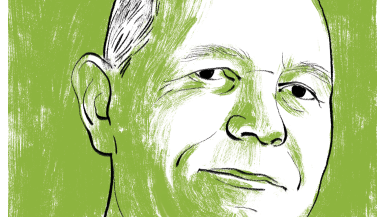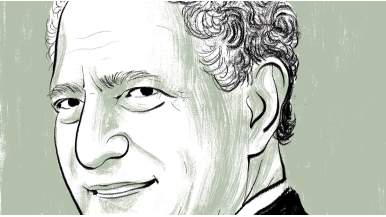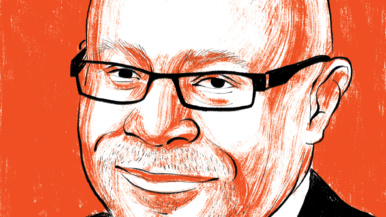Corporations should not be controlling our city-building

Remember when Uber started? The story was innovation: the jobs, the convenience, the new tech sector. Now, 10 years later, the company is competing with and undercutting public transit. It’s operating at steep quarterly losses to entrench its position as a transportation provider. It didn’t arrive in cities and say, “We’re here to compete with public transport,” and yet here we are, with questionable results on control over pricing, congestion, climate, and labour.
How about Google News? When it launched, it was a way to reach new audiences, create new sources of ad revenue and build a global conversation. Now? Google and Facebook control the distribution of news, and we’re in the midst of one of the greatest public trust crises in modern history.
Sidewalk Labs may be another page from the same big-tech playbook. The shift toward disrupting public infrastructure and local democracy starts with new, looser oversight of governance of public assets. Ambitious and ambiguous claims of progress are being used to demand new privileges—in this case, persistent access to the public service, regulatory changes or new governance bodies. The playbook continues with ongoing consulting, as laid out in Sidewalk’s plan, and extensive political lobbying for their cause.
Take the suggestion that governments should set up new bodies, or expand the mandate of Waterfront Toronto, to provide oversight for Sidewalk Labs and others as they create new urban innovations in our public spaces, using our public assets. That’s the easy part. And it doesn’t solve any relevant problem. We as a society—and not just Toronto—don’t fully understand when and how to hold tech companies accountable. This invites democratic disruption and loss of resident power. It won’t happen with a bang. It will happen through gradual erosion over years and years. And it will be driven by profit.
The problem with the Sidewalk Labs deal goes back to spring 2017, when Waterfront Toronto issued a request for proposals. Waterfront Toronto decided to break with its history, which was to develop the waterfront in small land parcels, and try something new. Under the nascent leadership of former CEO Will Fleissig, they opened this project up as an omnibus opportunity to potentially influence a large section of the waterfront across areas like real estate, economic development, municipal infrastructure and finance. Politically, they sold the deal to governments through the promise of jobs and the revenues that will come from a new tech sector.
What’s been sorely neglected is political discussion about the implications of a Google affiliate influencing the design of our cities. And while there are plenty of details to debate in their plan— from real estate valuation to economic development strategy and data governance—we have no space to seriously question the original premise of this project and its framing. The procurement of this deal invited corporate capture of city-building in a way that forces Toronto to contend with unnecessarily risky democratic calculus. What are politicians willing to trade for a Google deal? A lot, apparently.
Sidewalk Labs isn’t asking for explicit ownership or control of public infrastructure, or to privatize it outright. They wouldn’t be so direct. Think about how tech companies never “own” your data, but you grant them unlimited licence, and with it, power, control, and the capacity to monetize it. Now imagine that digital infrastructure and data running through every one of the proposed systems Sidewalk Labs seeks to design—energy, water, transportation, garbage and more.
This is a plan to build Sidewalk Labs directly into our public infrastructure and governance. How will these systems age over time? Who will pay for their maintenance? What happens if Alphabet changes its mind and doesn’t want to support the services it installs, which is what happened with Google Fiber in Louisville, Kentucky? Deals with tech companies aren’t normal real estate transactions. These relationships will last for decades. We don’t have any idea how we’ll be able to shape them going forward or, at an even more basic level, why the proposed amount of surveillance is needed at all.
Are there urban planning policy changes the city might want to consider for future neighbourhood developments? Absolutely. But my expectation, in the democracy I thought I lived in, is that these would take place through democratic channels. Supporters of Sidewalk Labs like to say that the plan has to go to city council and other levels of government for approvals. Of course it does. But our governments aren’t there to approve corporate design of new governance systems. Governments are the ones that design our society for the public interest. This project is happening backwards.
Despite some public frustration with government’s pace and style, its purpose is markedly different from Sidewalk Labs. If that line gets blurred, as it has with this deal, it will be increasingly difficult to untangle ourselves from corporate influence on some of the most foundational aspects of our lives and our democracy.
But there’s good news, too. This deal isn’t done. We can take the plan, thank Sidewalk Labs for their work, and pause as we consider the ideas themselves—if we want to implement them, how and with who. The public sector can hold space to build, procure and manage a range of alternatives to Sidewalk Labs. They exist. We can give the government room to work with our communities on values—and systems to ensure they show up in our public policies and laws. Now, it’s time for the three levels of government to realize their mandate and lead.
This story originally appeared in the September 2019 issue of Toronto Life magazine. To subscribe, for just $29.95 a year, click here.























